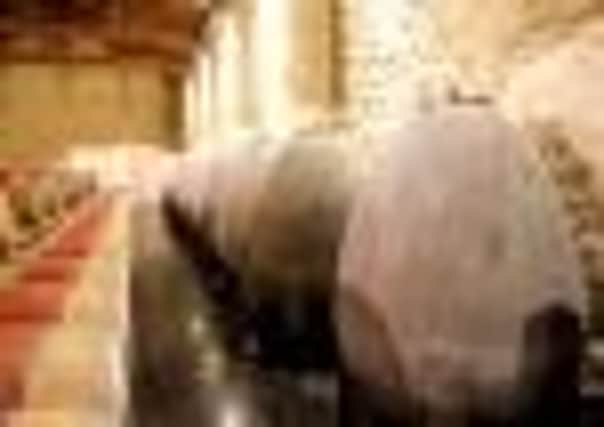Blossoming Bordeaux


Of course, there are bigger tastings, when the wines of a commune or even a particular association are grouped together, which makes it easier on the drivers, but essentially the world will assess the 2010 vintage on the hoof and their reaction to the young wines will determine its price.
The wine they are assessing is not just young, it is an infant, and has barely stopped moving since it was bunches of grapes on the vine. Now it has been rushed through its final stages of fermentation and blended into a close approximation of what the château has decided will be their 2010 wine.
Advertisement
Hide AdAdvertisement
Hide AdThis is a difficult job since it requires the cellar masters to assess the wine in extreme youth and work out the best blend of their barrels, even though the wine has only been in wood for a few weeks. It will spend the next year in barrel, evolving and maturing, to be bottled and shipped sometime in 2012, but long before then it will have been sold and the money handed up the purchasing chain from consumer to merchant, and back to the château.
It is an age-old system which no-one in the chain wants to change. The attraction for the consumer is that there is usually a price advantage in handing over significant amounts of cash to buy something that won’t be shipped for 18 months. Prices can double, treble or even quadruple in that time and many investors fund their own drinking in this way. Merchants and property owners also like to see consumers commit to their purchases in advance so they can concentrate on the next vintage.
But it is a system that is not without its problems. There are unscrupulous people who will offer wines at advantageous prices, only to scoop up the cash and disappear, leaving purchasers none the wiser until delivery time draws near. So if you are tempted to buy, make sure you deal with a reputable merchant or preferably a Yorkshire-based one so you can knock on his door and make sure you get it.
To avoid the crowds, I was in Bordeaux last week and had the chance to assess many 2010 wines. The smiles on the faces of the châteaux proprietors said it all – 2010 is yet another great year and demand will be high so be prepared to dig deep in your pockets if you want some.
Advertisement
Hide AdAdvertisement
Hide AdDenis Dubourdieu, Professor of Oenology at Bordeaux University, as well as a proprietor and consultant winemaker in the region, has declared 2010 to be a great, even a very great, year for both red and white wines. Good fruit set, sunny July weather and a long, dry autumn means that grapes were small and ripe, and the anthocyanins, responsible for colour, depth of flavour and longevity were also high.
So if you are interested in buying some 2010 Bordeaux for your cellar – what should you spend your money on? That very much depends on where prices are set and in Bordeaux various proprietors will wait for their neighbours to declare first, just so that the status quo is maintained. Prices will begin to trickle out starting next week, but might take until mid-May before the top names declare.
One property which seems to be soaring far above its status quo is Ch. Pontet-Canet, officially classified as a fifth growth in the Pauillac commune, but which has seen massive investment.
It occupies 81 hectares of land, and butts up to the Rothschild properties of d’Armailhac and Carruades de Lafite, on a fine stretch of gravel, just a kilometre from the Gironde. Owned by a négotiant for over a century, with its wines frequently blended away into obscurity, Pontet-Canet was bought in the 1970s by the Tesseron family who have extensive interests in cognac. They have revived the château and its vineyards and introduced a series of changes to make this property is one of the most up-to-date and old-fashioned, all at the same time.
Advertisement
Hide AdAdvertisement
Hide AdThey have gone back to using horses to plough between the vines. “Machinery compacts the soil and takes the life from it,” said Alfred Tesseron when I met him. They have also adopted biodynamic methods, using composts instead of chemicals and they plan their schedule around the cycles of the moon. Although the term biodynamics is somewhat new-age, it really means that they have gone back to using methods that farmers two generations ago would recognise.
They have also introduced new fermentation vats, as well as a few futuristic concrete vessels known as Nomblot eggs which are favoured by biodynamic producers for their ability to produce particularly harmonious wines.
But this wine is not being made by some long-haired eco-warrior. “I drive a big car and I take lots of planes,” said Alfred with a smile, “I just want my wine to show an expression of the soil of Pontet-Canet, not the technology I could use to make it.”
Certainly the wines have shown well in recent vintages. The 2010 is rich and concentrated, with structuring, silky tannins and a long, savoury finish, but it will not be cheap. The current price for 2009 Pontet-Canet is around £1,000 a case, (try Bon Coeur www.bcfw.co.uk or Berry Bros www.bbr.com) and I suspect the 2010 may be a little higher.
Advertisement
Hide AdAdvertisement
Hide AdIf you are interested in buying Bordeaux 2010, then check out prices carefully but select your merchant even more carefully. Jamie Goodhart of Bon Coeur (01765 688200) will be offering the 2010 vintage. He lives in Masham, so will be easy to find.